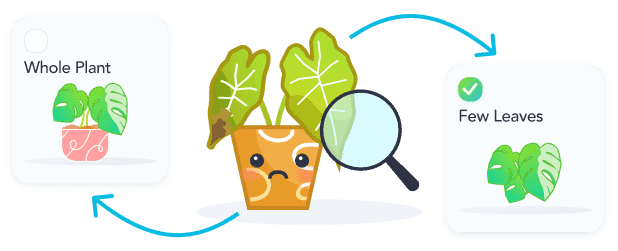Every 7d
Recommended Frequency
1 /2 cup of water
Recommended Amount
The Anthurium Vittarifolium will need watering once a week or when the first top inch of soil has dried out. Ensure that you dispose of any excess water that will drain through the pot as your plant does not like standin...
Every 90d
Recommended Frequency
Fertilize your Anthurium Vittarifolium every three months using a liquid fertilizer high in phosphorus, diluted by three-quarters strength.
Indirect Sun
Recommended
Indirect Sun or Filtered Sun is when sun exposure is being filtered through a sheer curtain or is not able to have the sun's rays directly hit the leaves/flowers of your plant.
Every 730d
Recommended Frequency
Repot your Anthurium Vittarifolium every two years, or once it outgrows its pot.
Peat Soil
Recommended Soil
Peat Soil is an acidic soil that retains a lot of moisture and slows decomposition. Due to such a high moisture retention this mix may require irrigation to help with draining. This soil type is best used when paired wit...

Shop Anthurium Vittarifolium
Questions about Anthurium Vittarifolium
#NAME?

Toxicity of Anthurium Vittarifolium

Common Pests and Diseases
Leaf Browning and Crisping
Underwatering
To address underwatering in Anthurium vittarifolium, ensure a consistent watering schedule that keeps the soil slightly moist but not waterlogged. Use a well-draining soil mix to prevent root rot. During warmer months, water the plant more frequently, and reduce watering in the cooler months. Consider using a moisture meter to better gauge the soil's moisture level. If the plant has been severely underwatered, soak the pot in a water bath for a few minutes to rehydrate the soil thoroughly.
Spider Mite Infestation
Spider mites are tiny pests that thrive in warm, dry conditions. They feed on the sap of the Anthurium vittarifolium, causing yellowing, speckled leaves, and overall plant stress.
To combat spider mites, first isolate the affected plant to prevent spread. Increase humidity around the plant as mites prefer dry conditions. Wash the plant gently with water to remove mites, or use an insecticidal soap or neem oil solution, applying it thoroughly to the leaves, especially the undersides. Repeat the treatment every 7-10 days until the infestation is under control. Regularly inspect the plant for signs of return.

Related Plants
Other Articles:
Top 10 Most Popular Roses
Mar 22, 2022
How to Care for China Roses
Mar 11, 2022
How to Care for Chinese Money Plants
May 15, 2020
How to Grow and Care for A Bird of Paradise
Apr 26, 2020
Top 10 Plants To Grow In A Terrarium
May 31, 2022
How to Grow and Care for Lucky Bamboo
Mar 29, 2022
How to Grow and Care for Corn Plants
Mar 29, 2022
How to Care for Madagascar Dragon Trees
Mar 21, 2022



